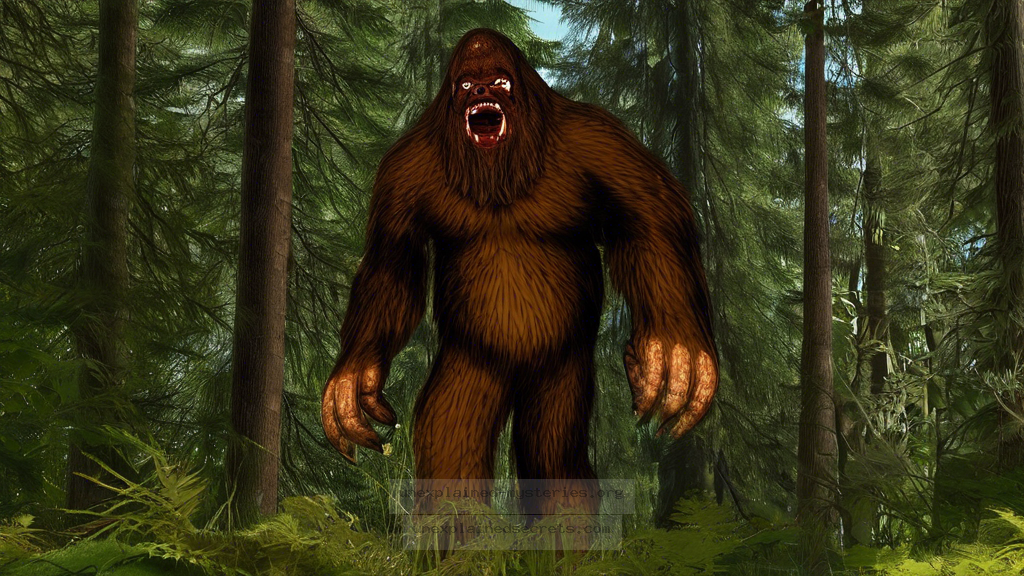What Evidence Exists for the Existence of Bigfoot, and Why Does It Remain Unexplained?
What Evidence Exists for the Existence of Bigfoot, and Why Does It Remain Unexplained?
The ongoing debate surrounding Bigfoot—a creature often described as a large, hairy, humanoid figure—has captured the fascination of many for decades. Despite numerous alleged sightings and claims of physical evidence, including footprints and hair samples, definitive proof of Bigfoot’s existence remains elusive. This raises a critical question: what evidence exists for Bigfoot, and why does it continue to evade scientific validation? Understanding this mystery not only highlights the challenges of cryptozoological research but also reveals insights into human belief systems and our relationship with the natural world. Let’s delve deeper into this compelling mystery.
Historical Context of Bigfoot Sightings
The legend of Bigfoot is rooted in the folklore of various indigenous cultures across North America, where it is often referred to as “Sasquatch.” The earliest recorded sighting in the United States dates back to the mid-19th century when European settlers began sharing stories of a large, hairy man-like creature roaming the forests. In 1958, the phenomenon gained significant attention when a construction worker named Jerry Crew discovered large footprints in Bluff Creek, California, which he claimed belonged to the elusive creature. This event marked the beginning of modern Bigfoot research and popular culture’s fascination with the cryptid.
Since then, thousands of reported sightings have emerged, with enthusiasts and researchers alike documenting encounters. The 1967 Patterson-Gimlin film, which purportedly captured footage of Bigfoot in the same Bluff Creek area, remains one of the most famous pieces of evidence. Yet, despite the historical context, conclusive proof of Bigfoot’s existence continues to be a topic of intense debate.
Core Concepts in Bigfoot Research
Several core concepts form the foundation of Bigfoot research, including eyewitness testimony, physical evidence, and the ecological feasibility of a large primate existing in North America. Eyewitness testimonies often describe a creature standing between 7 to 10 feet tall, covered in dark hair, with a strong, musky odor. However, human memory is fallible, and the reliability of such accounts is frequently questioned.
Physical evidence, such as footprints and hair samples, has been collected over the years. Proponents of Bigfoot’s existence claim that many of these footprints exhibit features inconsistent with known animals. For example, some tracks show a distinct mid-tarsal break, which is characteristic of primates but not of bears or other large mammals. However, skeptics argue that many of these “evidence” can be attributed to hoaxes or misidentifications of known animals.
Practical Implications of Evidence
The implications of the evidence surrounding Bigfoot are vast, impacting not only the field of cryptozoology but also our understanding of wildlife conservation and human psychology. For example, the search for Bigfoot has led to increased awareness and interest in the conservation of forested areas where sightings occur, as many enthusiasts are motivated by a desire to protect these habitats.
Moreover, the fascination with Bigfoot raises questions about human perceptions of the unknown. The desire to believe in such creatures often reflects deeper societal issues, such as a yearning for connection with nature or a need for mystery in an increasingly technology-driven world.
Alternative Perspectives on Bigfoot
While many enthusiasts firmly believe in Bigfoot’s existence, alternative perspectives challenge these claims. Skeptics often cite the lack of physical evidence that can withstand scientific scrutiny. For instance, the scientific community typically requires rigorous methodologies and peer-reviewed studies to accept extraordinary claims, and Bigfoot research has not consistently met these standards.
Some anthropologists argue that the stories of Bigfoot are more about cultural mythology than reality. They suggest that these tales serve as a means for communities to bond over shared experiences or fears, particularly regarding the wilderness. Additionally, they emphasize the role of folklore in shaping human understanding of the environment.
Common Misconceptions and Clarifications
Numerous misconceptions surround the Bigfoot phenomenon. One prevalent myth is that all sightings are hoaxes or misidentifications. While some instances may indeed fall into these categories, credible eyewitness accounts exist that have not been satisfactorily explained.
Another misconception is that Bigfoot, if it exists, would be a direct descendant of known primates. However, some theories suggest that it could be a distant relative or an undiscovered species entirely, adding complexity to its biological classification.
Best Practices for Investigation or Study
For those interested in investigating the Bigfoot phenomenon, several best practices can enhance research efforts. First, thorough documentation is crucial. This includes detailed records of sightings, environmental conditions, and any physical evidence collected. Utilizing modern technology, such as thermal imaging cameras and audio recorders, can also aid in capturing potential evidence.
Collaboration with wildlife biologists and anthropologists can provide valuable insights and lend credibility to investigations. Engaging in respectful dialogue with local communities and indigenous groups can also yield important cultural context regarding Sasquatch lore.
Future Developments and Ongoing Research
The future of Bigfoot research is likely to be shaped by advancements in technology and interdisciplinary collaboration. Genetic testing of purported hair samples may provide new insights into the biology of the creature, while improved imaging technology can aid in locating and documenting potential evidence.
Moreover, the rise of citizen science projects encourages enthusiasts to contribute to reputable research efforts, fostering a community driven by both curiosity and scientific inquiry. As our understanding of wildlife and ecosystems evolves, so too may our perceptions of creatures like Bigfoot.
Real-World Examples and Documented Cases
Numerous documented cases illustrate the ongoing intrigue surrounding Bigfoot. For instance, the 2008 video footage from Georgia, which claimed to show a dead Bigfoot, turned out to be a hoax. Similarly, the infamous “Mogollon Monster” sightings in Arizona highlight the complexity of eyewitness accounts, with many still believing in the creature despite the lack of concrete proof.
Another notable case is that of the “Skookum Cast,” where researchers claimed to have cast a mold of a Bigfoot’s body impression in mud. While some researchers hailed it as significant evidence, others criticized the methods used and questioned its authenticity, exemplifying the contentious nature of Bigfoot evidence.
| Case Study | Year | Location | Significance |
|---|---|---|---|
| Patterson-Gimlin Film | 1967 | Bluff Creek, CA | Iconic footage, still debated |
| Skookum Cast | 2000 | Washington | Alleged body impression cast |
| Georgia Bigfoot Hoax | 2008 | Georgia | Revealed as a hoax, impacted credibility |
Conclusion: The Mystery of Bigfoot Persists
In conclusion, the quest for Bigfoot remains one of the most captivating mysteries in cryptozoology. Despite a wealth of anecdotal evidence, physical proof continues to elude researchers and enthusiasts alike. The historical context of the legend, combined with the complexities of human belief, cultural narratives, and ecological considerations, contributes to the ongoing debate. As technology advances and interdisciplinary approaches emerge, the mystery of Bigfoot may inch closer to resolution, or it could continue to thrive in the realm of folklore and speculation. Regardless, the search for this elusive creature highlights our innate curiosity about the unknown and the depths of human imagination.
Other Articles
Recent Posts
- What Happened to Flight MH370? The Conspiracy Theories That Still Haunt Us
- What Secrets Lurk Within the Walls of the Infamous Trans-Allegheny Lunatic Asylum?
- What Evidence Supports the Existence of Bigfoot in the Pacific Northwest?
- What Happened to the Indus Valley Civilization? Unraveling the Mysteries of Ancient Urban Life
- Can Telepathy Be Scientifically Proven Through Laboratory Evidence?







